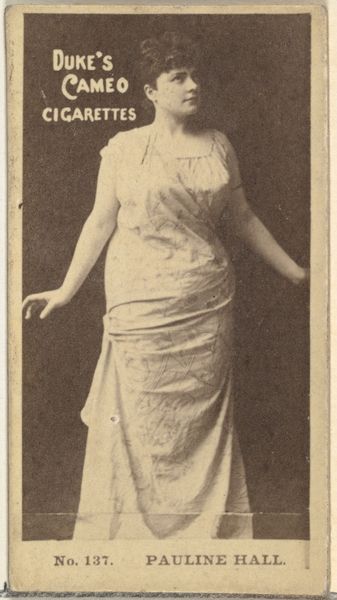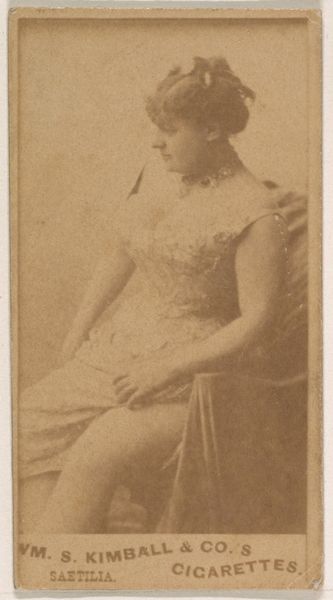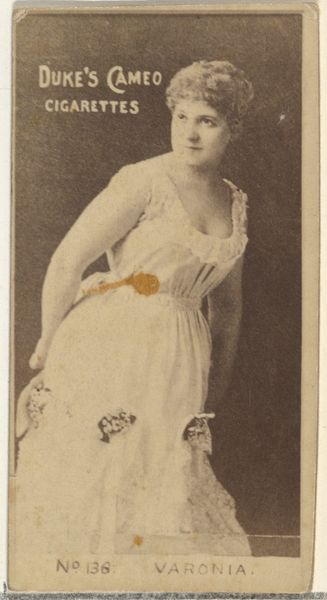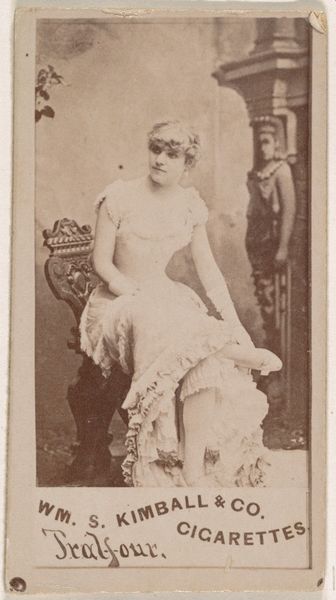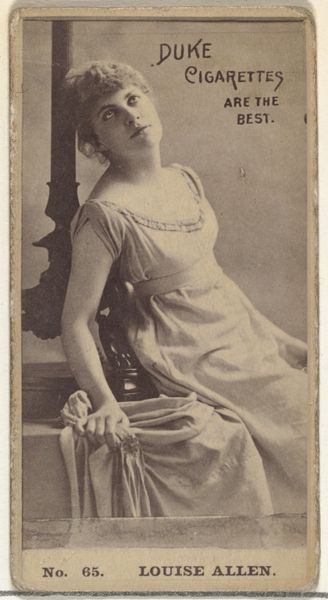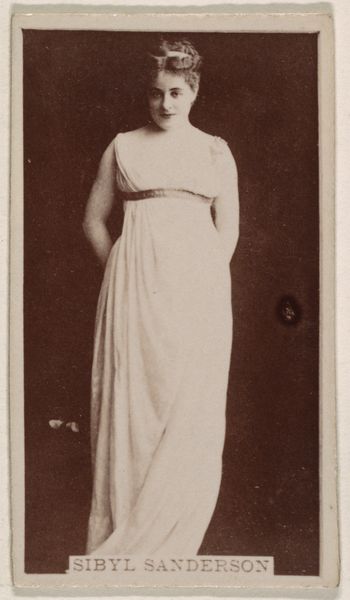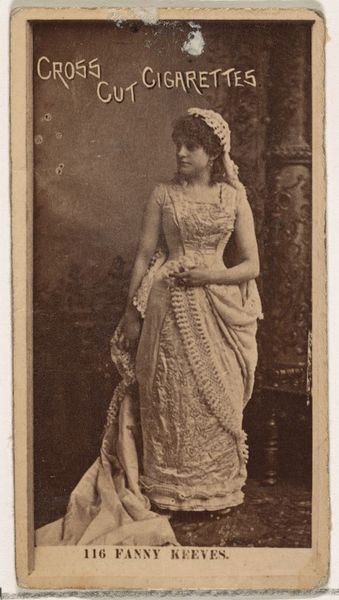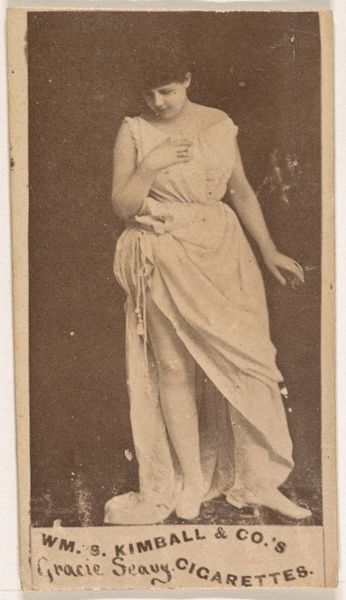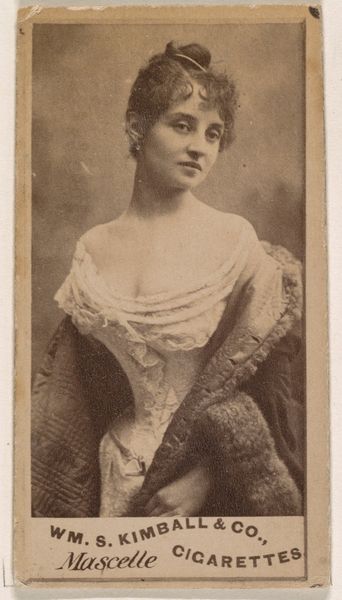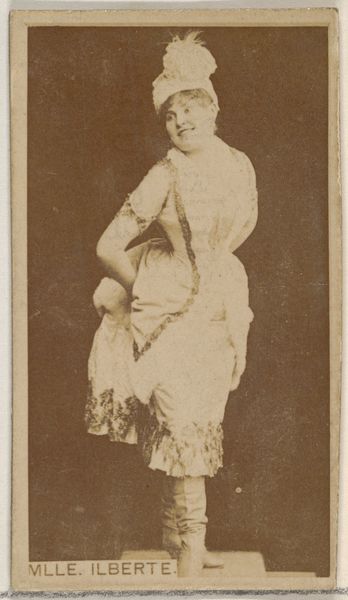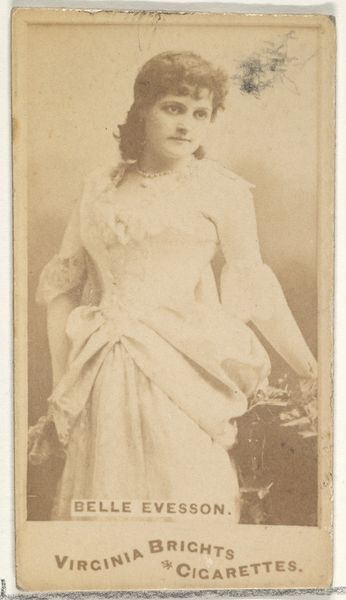
Card Number 16, Miss Broughton, from the Actors and Actresses series (N145-2) issued by Duke Sons & Co. to promote Cross Cut Cigarettes 1880s
0:00
0:00
drawing, print, photography
#
portrait
#
drawing
#
16_19th-century
# print
#
impressionism
#
photography
#
19th century
Dimensions: Sheet: 2 5/8 × 1 7/16 in. (6.6 × 3.7 cm)
Copyright: Public Domain
Editor: Here we have "Card Number 16, Miss Broughton," a promotional print from the 1880s for Cross Cut Cigarettes. It’s really interesting to see how celebrity endorsements were already a thing back then. It kind of feels like an early version of an influencer post! What historical insights does this image offer you? Curator: This simple portrait actually illuminates a fascinating intersection of celebrity culture, advertising, and societal norms in the late 19th century. Think about it: a card featuring an actress packaged with cigarettes. What does that pairing say about the intended consumer and the perceived status of actresses at the time? Editor: So it's not just about selling cigarettes? Curator: Not at all. It's about associating the product with glamour, fame, and aspiration. The rise of mass media and mass production enabled companies like Duke Sons & Co. to reach broader audiences, and these cards became collectible items, creating a sort of social currency around the product. Consider also the accessibility of this image versus attending a theatrical performance. Who was more likely to see the image? Who went to plays? Editor: I never thought about that difference in accessibility! That makes me wonder about Miss Broughton herself. Did being featured on these cards change her career, for better or worse? Curator: Exactly! The image raises questions about agency, representation, and the construction of fame in a burgeoning media landscape. These cards offered visibility, but visibility on whose terms? What responsibilities did W. Duke, Sons & Co. have for that representation? Editor: That’s such an interesting way to think about it. I guess what seems like a simple advertising card opens up a whole can of worms about society and representation. Curator: Precisely. It serves as a reminder that even seemingly innocuous objects can be powerful historical documents, reflecting and shaping cultural values.
Comments
No comments
Be the first to comment and join the conversation on the ultimate creative platform.
